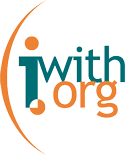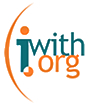Stuck? Feeling hopeless? Unsure of your next step? For the almost two decades Idealist has been around, we’ve been asking you—our community—to tell us about the obstacles you face when trying to turn your good intentions into action. We’ve compiled a short list of the top-reported obstacles, and now we’re blogging about them one by one. This week, we present: people issues.

Sometimes a friendly conversation is the most effective way for an idea to spread.
(photo courtesy Filckr Creative Commons)
We can be so stubborn sometimes. Even with clear information, incentives, and easy-to-follow instructions, a lot of the time people just don’t give up their old habits.
How many of us have tried to encourage people in our community to do something differently—even if it would make their lives easier or better in some way—only to have those ideas not catch on or slowly fizzle out over time?
Even in a field like medicine where innovative ideas can save literally hundreds of thousands of lives, new ideas and improved practices are oftentimes shrugged off as unimportant. Why is this the case?
Surgeon, writer, and researcher Atul Gawande recently wrote a piece in The New Yorker exploring how good ideas are spread. By examining a recent campaign in northern India designed to reduce infant deaths after childbirth, the Better Birth Project, he suggests that a friendly face may be the most important thing campaigns designed to successfully create lasting change can offer:
The most common approach to changing behavior is to say to people, “Please do X.” Please warm the newborn. Please wash your hands. Please follow through on the twenty-seven other childbirth practices that you’re not doing. This is what we say in the classroom, in instructional videos, and in public service campaigns, and it works, but only up to a point.
To create new norms, you have to understand people’s existing norms and barriers to change. You have to understand what’s getting in their way. So what about just working with health care workers, one by one, to do just that?
With the Better Birth Project, we wondered, in particular, what would happen if we hired a cadre of childbirth-improvement workers to visit birth attendants and hospital leaders, show them why and how to follow a checklist of essential practices, understand their difficulties and objections, and help them practice doing things differently. In essence, we’d give them mentors.
He continues…
In the era of the iPhone, Facebook, and Twitter, we’ve become enamored of ideas that spread as effortlessly as ether. We want frictionless, “turnkey” solutions to the major difficulties of the world—hunger, disease, poverty.
We prefer instructional videos to teachers, drones to troops, incentives to institutions. People and institutions can feel messy and anachronistic. They introduce, as the engineers put it, uncontrolled variability.
But technology and incentive programs are not enough. “Diffusion is essentially a social process through which people talking to people spread an innovation,” wrote Everett Rogers, the great scholar of how new ideas are communicated and spread. Mass media can introduce a new idea to people.
But, Rogers showed, people follow the lead of other people they know and trust when they decide whether to take it up. Every change requires effort, and the decision to make that effort is a social process.
In the case of the Better Birth Project, direct and consistent contact with trained mentors is starting to make a difference. As the nurses build relationships with the campaign workers, they’re taking more and more ownership over the new ideas and changing their routines.
And why are they doing what the mentors suggest? In one nurse’s words: “She was nice.”
—
Do you know of other campaigns that have successfully used sociable tactics like this? Or campaigns that prove an exception to the rule?













